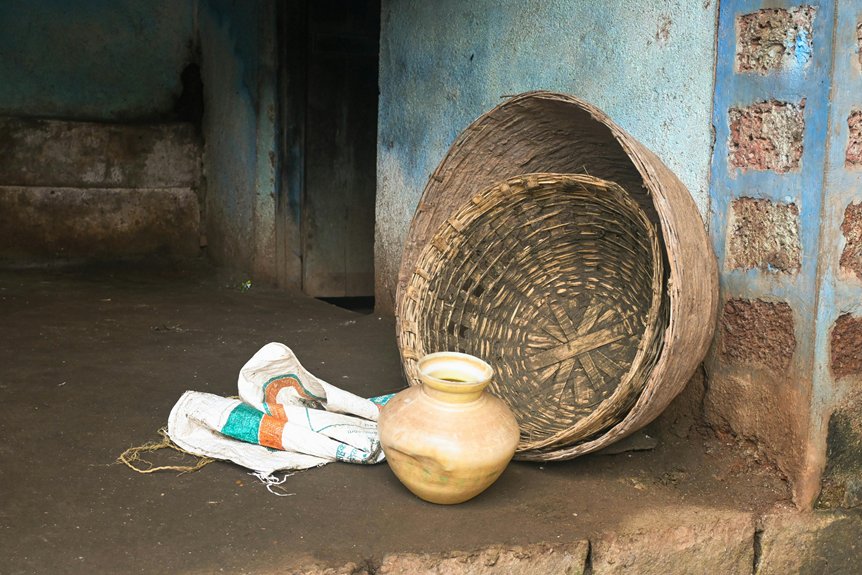Discover Cyprus’s Troodos Mountain pottery classes where you’ll transform raw clay into cultural narratives. You’ll learn ancestral wheel-throwing techniques from master artisans in family-run workshops, using local mountain clay and traditional wood-firing methods. Each handcrafted vessel connects you to generations of ceramic craftsmanship, blending ancient Greek influences with contemporary artistic expressions. The journey awaits, promising secrets etched in every carefully molded form.
Punti di forza
- Troodos Mountain Pottery Workshops offer immersive learning experiences connecting participants directly with generations-old ceramic crafting techniques from Cyprus.
- Traditional hand-molding and wheel-throwing classes are conducted by master artisans who preserve familial pottery knowledge spanning multiple generations.
- Community-focused ceramic centers in mountain villages provide comprehensive workshops ranging from beginner fundamental skills to advanced specialized techniques.
- Local clay sourcing and wood-firing methods form integral parts of the learning experience, allowing students to understand authentic mountain pottery traditions.
- Workshops emphasize cultural preservation, teaching participants not just technical skills but the deeper narrative and historical significance of mountain ceramic arts.
Ancient Clay Techniques of the Troodos Mountain Villages
While the Troodos Mountains have long been a cradle of cultural preservation, the region’s pottery techniques represent a profound narrative of human creativity and survival. You’ll discover that traditional pottery workshops in the Troodos Mountains of Cyprus embody centuries-old craftsmanship passed through generations of skilled artisans.
In these mountain villages, you’ll witness intricate hand-molding and slip-casting methods that transform raw clay into functional art. The wood-firing techniques used here aren’t just technical processes, but cultural rituals that connect contemporary potters to their ancestral roots. Each ceramic piece tells a story of rural mountain life, featuring earthy tones and distinctive patterns that reflect the landscape’s raw beauty.
When you explore these workshops, you’ll understand how these ancient techniques aren’t merely preservation efforts, but living traditions that continue to evolve, demonstrating the remarkable resilience of Cypriot mountain craft practices.
Master Artisans and Their Family Pottery Traditions
In the heart of mountain pottery traditions, master artisans emerge as living repositories of generational craft knowledge, carefully preserving techniques that have been meticulously transmitted through family lineages for centuries.
You’ll discover that these skilled potters aren’t just craftsmen, but cultural guardians who maintain intricate connections between past and present. Their workshops reveal profound familial bonds, where pottery-making skills are passed from parent to child, creating an unbroken chain of artistic transmission. Each ceramic piece tells a story of ancestral expertise, embodying generations of refined technique and cultural identity.
When you visit villages like Margarites, you’ll witness how these master artisans blend ancient Greek influences with contemporary methods. Their workshops aren’t merely production spaces, but living classrooms where traditional knowledge comes alive. By participating in hands-on classes, you’ll experience firsthand the intimate relationship between artisan, clay, and generations of accumulated wisdom that define these remarkable mountain pottery traditions.
Hands-On Learning: Wheel Throwing and Handbuilding Workshops
Emerging from centuries-old traditions, ceramic workshops today offer immersive experiences that transform novice learners into active participants of an ancient craft. You’ll discover that community-focused centers provide engaging environments where wheel throwing and handbuilding techniques come alive through expert instruction.
As you explore beginner classes, you’ll learn fundamental skills that connect you directly to pottery’s rich cultural heritage. Intermediate workshops challenge you to expand your repertoire, introducing specialized techniques like slip casting and paperclay. Visiting artists bring diverse creative perspectives, helping you refine your approach and develop nuanced understanding of ceramic arts.
Centers like Arrowmont School of Arts and Crafts and Clay Art Center design courses to foster individual growth, ensuring that whether you’re a complete novice or seeking to advance your skills, you’ll find a supportive learning environment. These workshops aren’t just about making pottery-they’re about experiencing a living, breathing artistic tradition.
Local Materials and Traditional Pottery Firing Methods
The artistry of pottery extends far beyond shaping clay on a wheel-it’s deeply rooted in the geological character of a region’s landscape. In Margarites Village, potters harness the rich clay soil from surrounding mountain terrain, transforming local earth into extraordinary ceramic creations that reflect the area’s natural heritage.
Your journey into traditional pottery reveals intricate firing techniques that have been carefully preserved through generations. Wood-firing and ancient anagama kilns aren’t just methods-they’re cultural narratives embedded in each ceramic piece. These traditional approaches impart distinctive colorations and textures that machine-produced ceramics can’t replicate.
When you observe local potters working, you’ll witness how they seamlessly blend ancestral techniques with contemporary artistic expressions. Their craft isn’t merely about creating functional objects; it’s a profound dialogue between human creativity and geological resources, where every piece tells a story of Cretan cultural continuity and artistic innovation.
Cultural Preservation Through Ceramic Arts
While ceramic arts serve as more than mere artistic expression, they embody a profound mechanism of cultural memory and generational transmission in Cretan mountain communities. When you explore pottery workshops in villages like Margarites, you’ll discover how each ceramic piece represents a living narrative of cultural heritage, preserving ancient techniques that have been meticulously passed down through generations.
These ceramic traditions aren’t static museum artifacts but dynamic cultural practices that continue to evolve. You’ll witness artisans blending modern interpretations with time-honored methods, creating unique pieces that reflect the region’s rich artistic legacy. The pottery-making process becomes a tangible connection to historical identity, where each handcrafted vessel tells a story of community, skill, and artistic continuity.
Domande frequenti
How Much Should Pottery Classes Cost?
When exploring pottery classes, you’ll find prices vary widely based on experience and location. In mountain villages, you’ll typically spend $8 to $25 for a meaningful session. Don’t be surprised if a 30-minute introductory class costs just $5-$10, while a half-day cultural immersion might run around $40. Your investment depends on class length, group size, and the instructor’s expertise, but you’ll gain more than just a skill-you’ll connect with a rich cultural tradition.
How Expensive of a Hobby Is Pottery?
Pottery’s clay whispers ancient stories, molding your creative journey from modest beginnings to potential artisan mastery. You’ll find the hobby ranges from affordable to investment-heavy. Beginner classes start around $25-$75, while home studio setups can cost $1,000-$3,000. Monthly expenses hover between $50-$200 for active hobbyists. Depending on your passion and commitment, you’ll navigate pottery’s financial landscape from casual crafting to professional pursuits.
Why Is Pottery Class so Expensive?
You’ll find pottery classes are costly due to specialized materials, expert instruction, and intensive equipment needs. The craft demands skilled teachers, expensive kilns, and dedicated studio spaces that drive up prices. Each class represents generations of artistic knowledge, requiring significant investment in tools, techniques, and personal guidance. The art’s complexity and time-consuming nature mean you’re not just paying for a class, but experiencing a rich cultural tradition.
Which Town Is Known for Preserving the Tradition of Pottery-Making?
In the heart of Crete, you’ll find Margarites-a village where ancient clay whispers stories of generations. Here, pottery isn’t just a craft; it’s a living heritage. You’ll discover over 16 workshops preserving techniques that blend millennia-old traditions with contemporary artistry. The village’s rich clay soil has nurtured ceramic skills passed down through centuries, making Margarites a beacon of authentic Greek pottery-making culture.
Conclusione
You’ll discover that these mountain village pottery traditions aren’t just crafts-they’re living histories. Did you know that over 85% of these ceramic techniques have been passed down through generations for more than 500 years? By participating in these classes, you’re not just learning pottery; you’re preserving a cultural legacy that connects ancient Cypriot artisanal practices to contemporary artistic expression, ensuring these fragile traditions continue to thrive.

Vi presentiamo Natalie, che vive a Cipro da 10 anni. Ama esplorare la splendida natura dell'isola, come le foreste silenziose e le spiagge incontaminate. Natalie ha molte esperienze interessanti da condividere. Scoprite con lei le sue avventure a Cipro.

